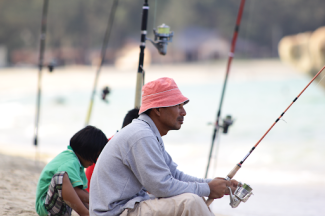
The Transatlantic Slave Trade took place primarily along the south and east coasts of America. And it’s not a coincidence that those areas are known as the best places to get seafood in the U.S.
After the Civil War ended in 1865, Black people were pushed away towards the coastlines of the U.S. With a limited amount of resources for food, they had no choice but to depend on the creatures that lived under water.
With seafood being their main source of living, Black fishermen cultivated a dominance of commercial fishing, and at one point covered 90 percent of the industry in the Chesapeake Bay. But as time continued, that number somehow took a drastic turn.
Now there are only nine Black commercial fishermen left in the Chesapeake Bay. One large reason for this is the BP oil spill in 2010 that originated from the Gulf of Mexico. With the waters being tainted, much of the fish was unharvestable. This left Black fishermen out of work. But there is still hope.
With a deep history of us fishing commercially and leisurely, we can continue the tradition by bringing awareness to the history of Black fishermen, like what Admiral Vince Leggett is doing with the Blacks of the Chesapeake Foundation. We can also learn to fish so that we can be more self-sufficient in catching our own food, and inspire more representation in the commercial fishing industry.